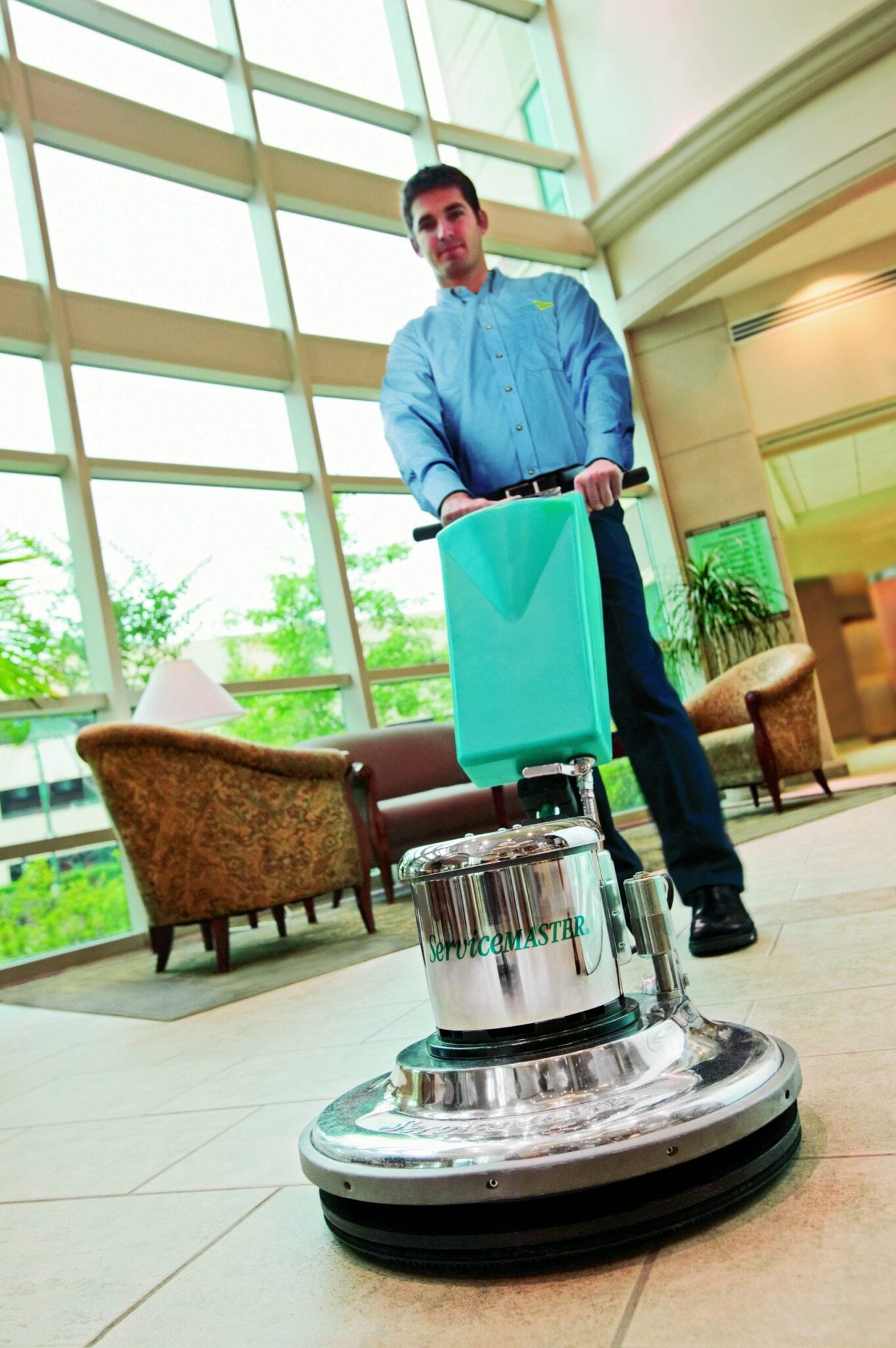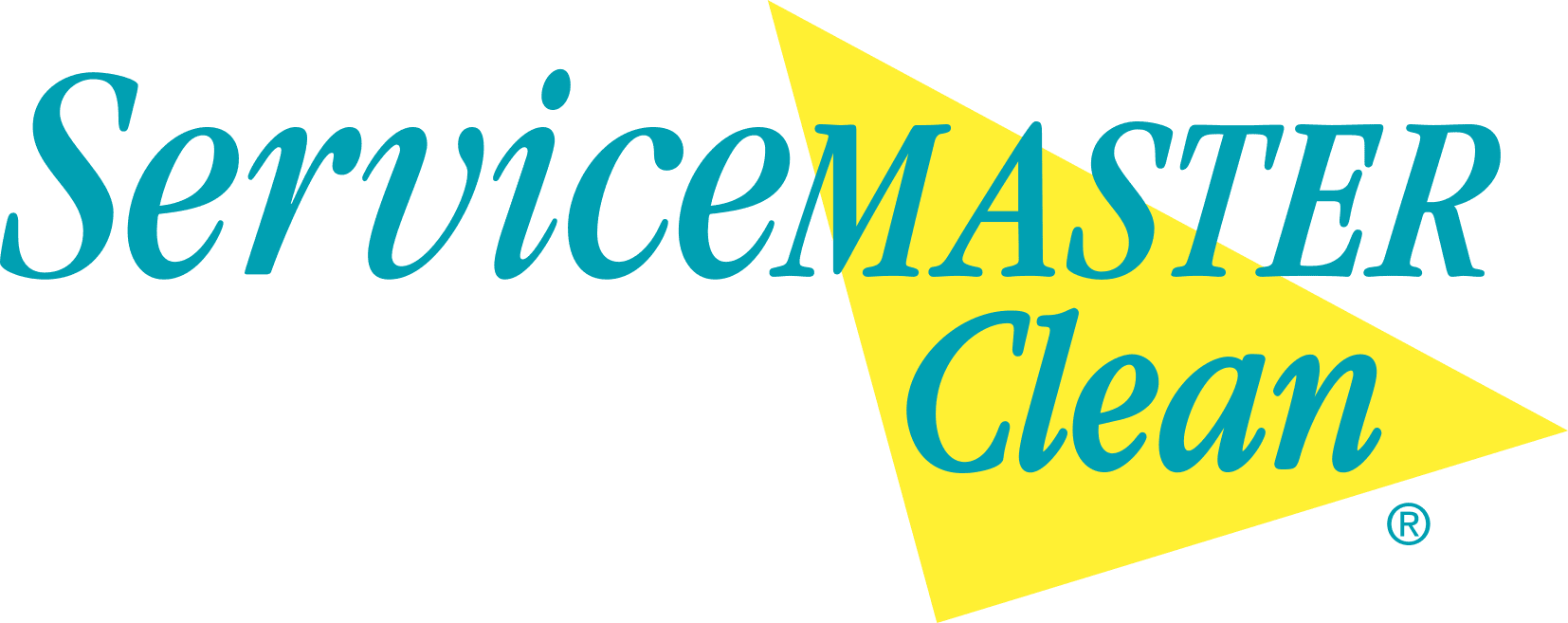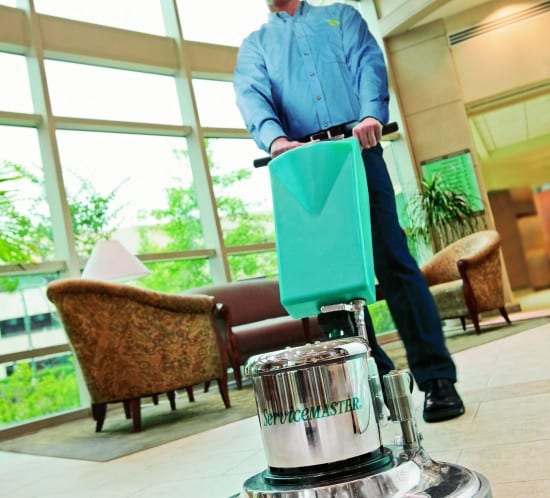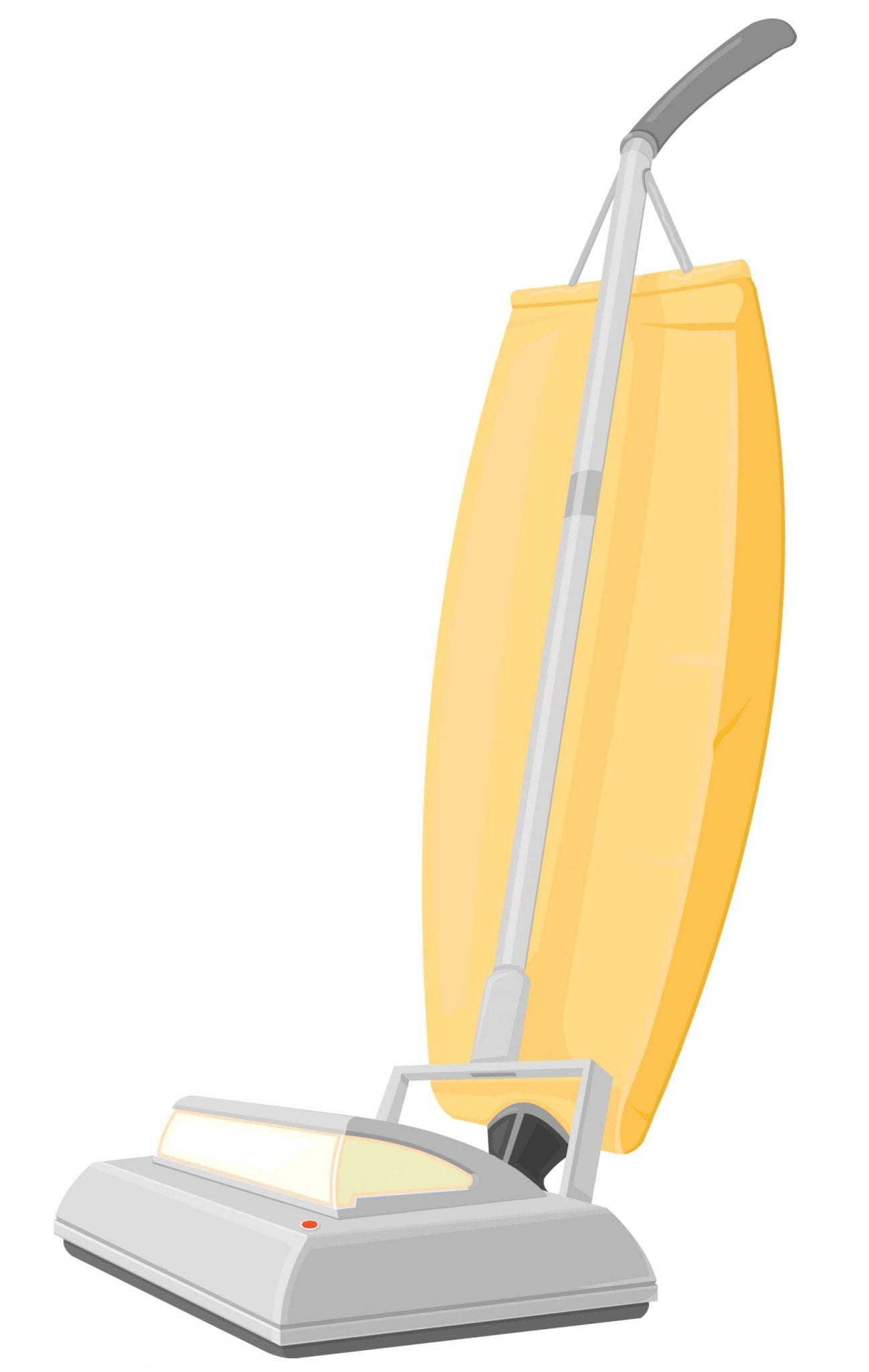Hard Surface Floors
Your Lobby & Parkade Entrance Floors
As with carpeted floors, hard surface floors (marble, stone, tile, synthetics, wood and metal), also need proper care. It is a bit of a misconception that they need less maintenance than carpeted floors. Having an established and effective cleaning plan has several advantages including:
- Maintains the appearance of the floors throughout the year.
- Seals & protects grout and mortar lines from penetration and darkening by dirt and oily soils.
- Makes daily maintenance/cleaning easier.

Techniques and Frequency
Maintaining a hard surface floor requires several different approaches to cleaning at different intervals.
- Daily prevention
- Regular sweeping, followed by mopping of the tiles with a solution of water and a PH neutral cleaning solution, will help prevent stains and dirt to be ground into a porous surface. Sealants only provide temporary protection, particularly for grout, so daily cleaning is essential. As with carpets, floor mats at doors are critical for preventing soiling material from reaching carpets.
- Quarterly Deep Cleaning
- In addition to daily efforts, hard surface floors require deep cleaning as well. For stone based materials, a high pressure extracting system must be used, which can lift oils from the porous surface. Wood and metal does not need such a cleaning, but they do require a sealant, as do stone surfaces. These should be applied every three months or so to ensure maximum protection of the surface.



